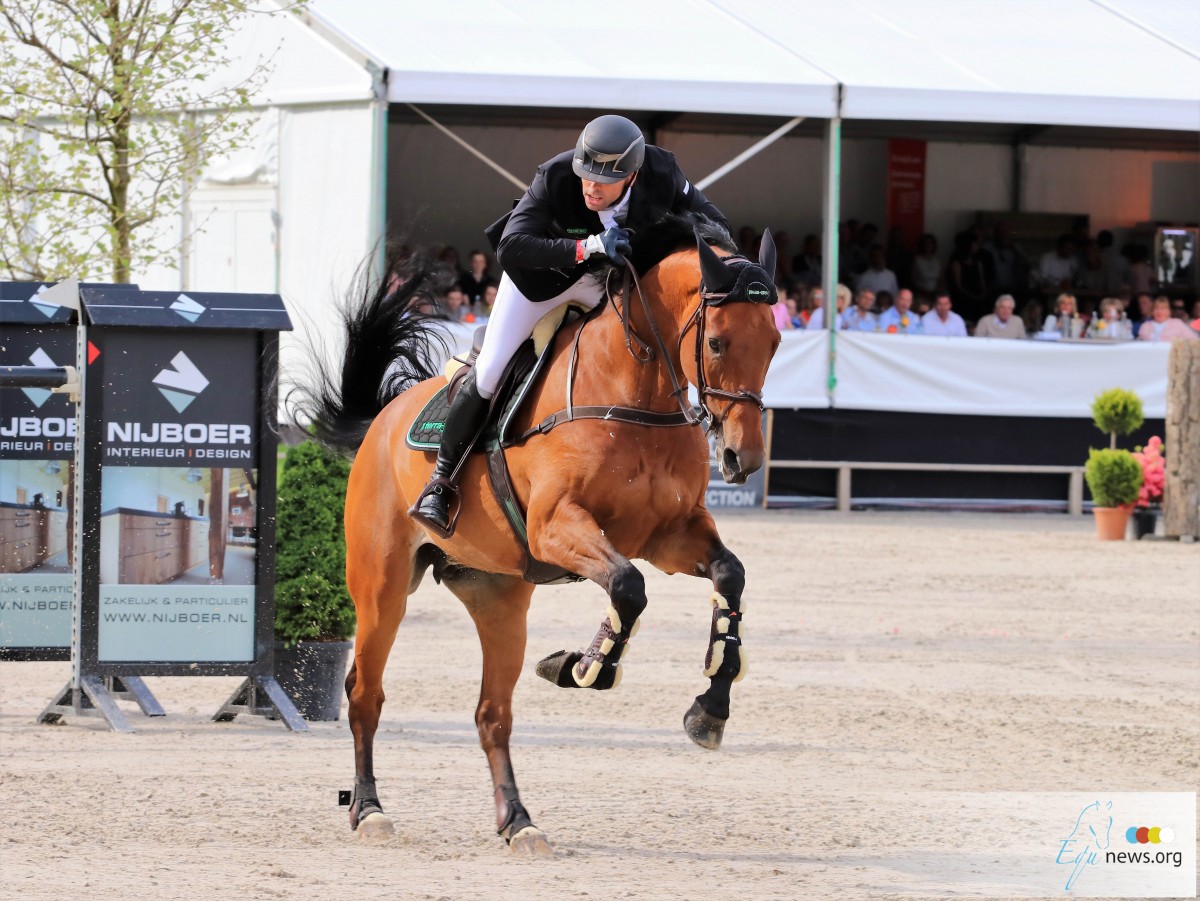The way in which the aids are applied can vary greatly and their use calls for skill and tact on the part of the rider. For the aids to be most effective the rider must be in balance and this is best achieved by establishing the correct position. In all movement, forward and in turn, it is essential for the rider to look ahead at the point towards which the horse is being asked to move. In turns and circles the horse remains bent around the rider’s leg. His hind legs should follow exactly in the track of the forelegs. This is achieved by riding from inside leg into the outside legs. So to turn or circle, the rider first checks position in order to correctly use inside and outside aids and body weight in coordination. The term ‘inside’ and ‘outside’ refer to the slight curve throughout the length of the horse’s body: inside always being the concave side of horse when correctly bent and vice versa. The rider applies the fingers on the inside rein intermittently to establish a more flexible contact and a slight bend, and thus indicate direction, turns his eyes inside and at the same time turns a little bit the body and transfers slightly more weight into the inside stirrup. He uses the outside rein to allow the bend of the horse’s head and neck with a soft constant contact, he uses both legs and a supple seat to maintain impulsion, but the inside leg by the girth dominates and must be sufficiently effective to induce the horse to bring his hind leg, on that side, forward and slightly under the centre of his body; only then will the horse be able to follow the true line of the circle. The outside leg rests slightly back; the leg remains in this position ready for use if the horse’s hindquarters start to swing to the outside of the circle. The rider must be very careful not to increase the weight of the inside rein. A rider is said to be in position right when the right leg is close to the girth, therefore indicating a slight bend with the right rein and controlling the impulsion, speed and bend with the left rein. In position left the aids are reversed.
Technique: Turns and circles
-
categories:

